

Remember when Belghast previewed Moonrise last month and briefly mentioned Pokemon? While I’ve heard more than a few people mentioned Jade Cocoon, I felt like focusing on the former game could help fans better understand what Moonrise is and how it isn’t a simple reskin/retool of a more popular game. After all, Junkies Nation had me cover the games in depth for awhile, and I don’t mean just a review or a guide. It’s a series I’ve grown with, abandoned, and refound, but even then, it’s a frustrating series to be a fan of sometimes. When I first heard of Moonrise, I knew this piece would have to be written at some point.
This comparison piece will mostly assume you’ve read Belghast’s preview and you have some basic ideas of a pet/monster collection game (mostly that you tend to choose a pet at the start and spend most of your time playing a form of rock, paper, scissors in RPG style combat, generally limited to 4 combat options per pet). Assuming you’re caught up on these ideas, let’s start breaking down on what sets Moonrise apart from Nintendo’s monster machine. It’s Moonrise vs. Pokemon!
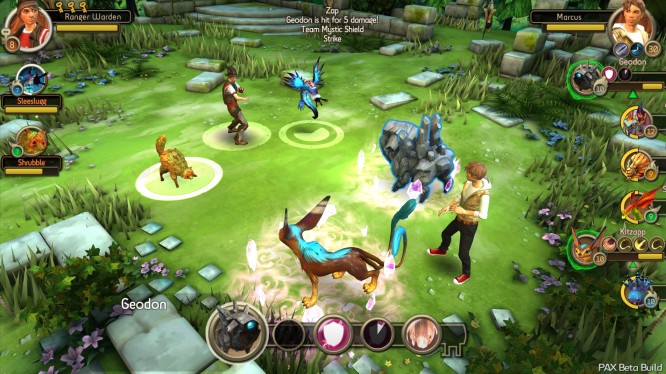
Fans of the very first two generations of Pokemon may recall that players were forced into the role of a young boy just starting his life in the animal bloodsport industry. Pokemon Crystal allowed players to finally choose to be a girl, but only the latest entries in the series, Pokemon X and Y, allowed character customization beyond gender and three skin colors, with very little variation. Even as a naturally brown eyed, brown haired man, this seemed to reflect Japanese cultural norms, despite being internationally loved. For example, after nearly 15 years of being a pokemon master, I can’t be an older man or a fat woman, let alone a veteran trainer. Moonrise doesn’t change the latter, but allows for many more customization options. While the game states you’re 22 years old, finally freeing us from the Peter-Pan hell of capturing monsters as a perpetual child, customization options give us access to faces that could at least pass as a youthful 30 year old. from red bearded black men to being a white punker girl.
And that’s just the start of it. Again, while I enjoyed the character customization in Pokemon X/Y, the series dropped this in the latest remakes, Alpha Sapphire and Omega Ruby. Customization was limited but at least we had it. Moonrise, though, simply does it better. More hair and skin tones, more clothing styles, a dye system. I can make a trainer that feels like it belongs to me, even if it’s the same height and weight as everyone else’s character.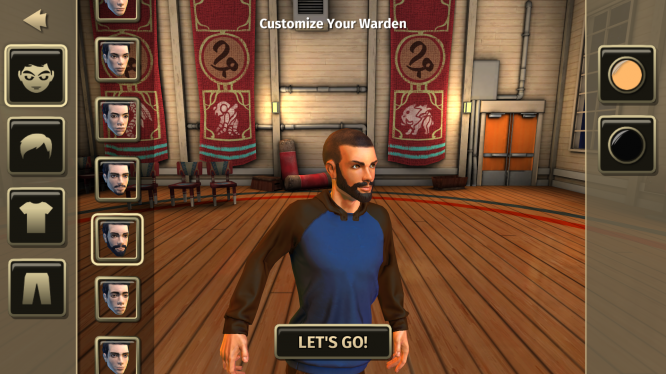
Next, while Pokemon uses turn based combat, Moonrise is timer based, and with two monsters. Speed determines how often you can attack, and each attack has both a charge time and a cooldown. This makes combat less of a thinking game and more of a reactive game. Yes, you need to have a strategy, but you should be spending pre-combat thinking of a game plan: who can guard, who can attack, do I want to bring a healer or a monster than can directly attack the opposing Warden? Pokemon also forces you to plan ahead, but the turn based combat leaves you plenty of breathing room. If your twitch skills and moment by moment reaction time is slow, you’ll lose in Moonrise.
Because of this, Moonrise makes a few other changes. For one, the usual rock-paper-scissor weakness system is spelled out on screen for you. If you choose a water attack, the game will visually show which enemy is weak to that attack and which is strong against it. At the same time, players really do need to memorize what each of their moves do, since the time you spend deciding what to do next will cost you precious seconds that could lead to your defeat.
Speaking of defeat, one of the features that Moonrise heralds is its ability to attack the trainer directly. While this is possible, against the AI, I often find my attack are unable to directly hit the enemy trainer or “Warden” as they’re called in MR. While my trainer also has his own attacks, many also only target my enemy’s pets, if not my own (for healing purposes of course!). Maybe in the later levels this will be more important, but for now, it generally feels safer to fight the pets, and only use interrupts to stop the opposing warden from meddling with the outcome of the match.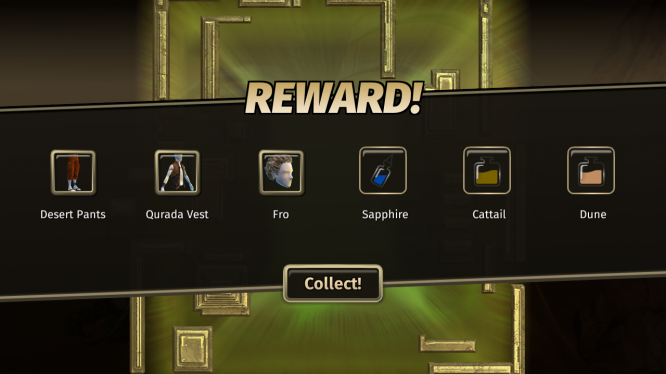
Victory is quite different too! Any battle you win, against monsters or men, results in consumables used for leveling (more on that soon), money, or prizes, like keys usually given to your account based on real world timers. Victory is also how you capture enemy monster. That is, if you beat a wild animal, it becomes cleansed. You can use a “warden key” to “capture” the animal to use it or… just set it free. Monsters have stars so you immediately know how powerful it is. No pokeballs or complex mathematical equations needed, which, oddly enough, makes the game more accessible to younger audiences than even the most current Pokemon games. However, those keys are limited to 4 at a time, and this system does make capturing much less strategic, leading to less of a thrill over capturing something.
That isn’t the only limitation though. First, moving in Moonrise’s world is largely done through clicking on various windows and choosing options. You don’t really choose to go up or down, you choose to click battling in the field/dojo or battling in a dungeon. Field/dojo battles are just a series of short fights where you heal after each battle and choose between searching for more wild beasts/enemy trainers or calling it quits. The dungeons require keys which, yes, are restricted by time or real life money. Again, you click on which room to “explore” and the map will show you if you found treasure or enemies. You get random battles because you choose them, not because there is some “tall grass” like in Pokemon. There’s no healing between these battles until you complete the floor you’re on, but you can use in-game money to buy healing items.
Leveling and evolution are also limited by similar systems. In game money is used to level characters when combined with consumables, known as “essences,” that let you choose what stat to increase (such as strength or speed). Money, however, is granted from many activities, including releasing monsters you no longer leave, so earning cash isn’t that hard, though you always have more items to spend money on than currency to spend it with. Also, unlike Pokemon, “useless” monsters can still be used to remove their abilities (again, for gold) and give them to other monsters, except for a single unique ability for each monster. While this is a bit annoying, normal game play makes this more than possible for casual players to gain enough money to enjoy the game as a free to play customer.
Evolution, however, feels “pay to win.” Access to dungeons is the surest way to get the right “dust” for evolution. While waiting for that dust, though, the monster ready to evolve stops gaining experience. You’ll need to run a dungeon several times before you can evolve it. While you have more dual evolution options than in Pokemon, the process is more difficult and feels limited by the dungeon mechanic, which honestly feels too tightly attached to the real-world transaction store. Worse yet, the game’s quest system will force you to both capture and evolve a specific grass companion you may not want to invest in, and doesn’t repay you the consumables needed to do so. Pokemon does a lot that I don’t like, but explicit quest trackers for a story line that stifles my training isn’t one of them.
Though the quest system does give the game more direction for those with short attention spans, it makes the game feel like a game rather than a world. One thing Pokemon is doing better is immersion.Shadows, monsters you can interact with outside of combat, footprints in the sand…. these make the latest Pokemon games feel like Nintendo’s making some progress. Moonrise’s decision to use a series of menus is perhaps a big reason why I rarely see other players (though being in a real closed beta that you can’t buy into may be part of that).
Speaking of immersion, Moonrise‘s dialogue leaves a lot to be desired. Pokemon is a far cry from Shakespeare, let alone Dragon Age, but it seems appropriate given the age of the main character and core audience. Moonrise’s script seems fairly dry, like an extended tutorial that a quick, interactive battle with instructional overlays could quickly explain with less long term, negative ramifications. Constant timers preventing player progression combined with the option for automated combat makes the game feel like chore. Maybe Undead Labs is aiming at an audience that only plays games for fifteen or twenty minutes at a time, but gamers who actually want to sit down and consume games will notice these systems that literally destroy the potential for immersion.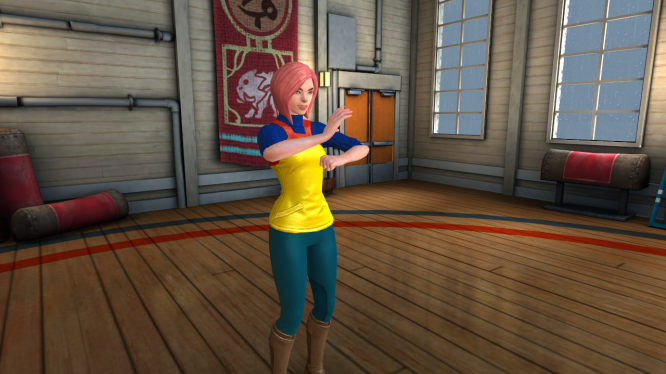
And this is a tragedy. Moonrise does good things that Pokemon is doing more often, but still doesn’t get right. For example, a “share exp” item was added to the Pokemon series ages ago, and is appearing sooner and sooner in the series. However, it’s still not a starting feature, and I’m glad Moonrise learned from this mistake. The Chinese influence is also more natural in Moonrise than in Pokemon and it’s regional adventures. The latter often relies solely on character and setting appearances, but not the monsters or actions themselves. Moonrise gets this right in a palpable fashion, right from the actual tutorial with a sort of “bow” that seems Chinese in origin but presented in a way that seeing other ethnicity perform it seem like a cultural norm for the game world.
In short, Moonrise is very much a product of the mobile genre. It strips a lot of the strategy features from the series to focus on reactions, which can be pretty fun, especially due to the genre’s age. However, when you sit down and play the game for hours at a time, reactive gameplay and mutliple series of UI windows leading you through the game may make some fans miss Pokemon‘s open worlds that are accessible for the box price of the game, rather than being unlockable for a limited time based on how much real money or literally automated grinding you’re willing to endure.
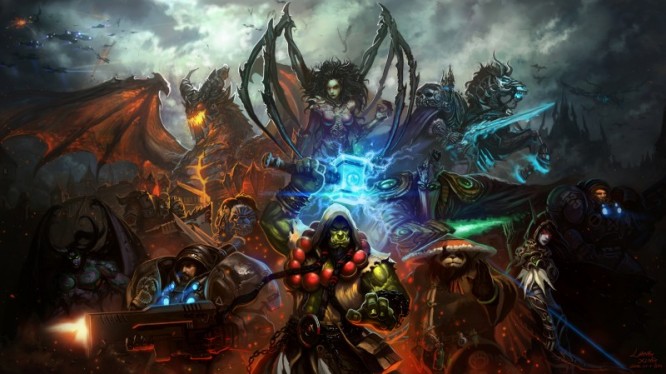

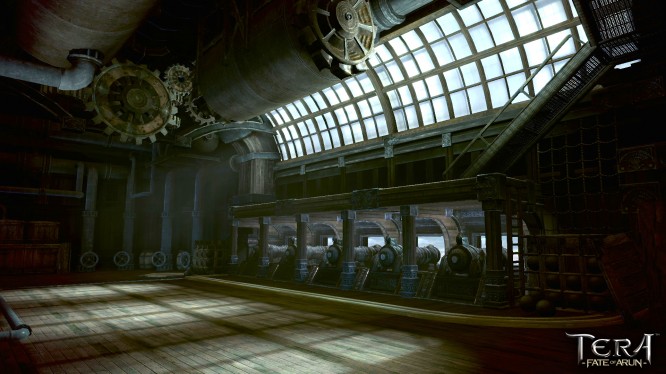

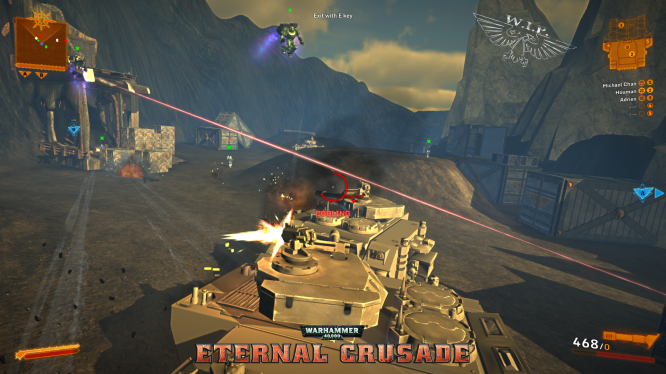 Interview with Nathan Richardson, Senior Producer for Warhammer 40,000 Eternal Crusade .
Interview with Nathan Richardson, Senior Producer for Warhammer 40,000 Eternal Crusade . WoW Wednesday: What's Really Wrong With World of Warcraft .
WoW Wednesday: What's Really Wrong With World of Warcraft . TERA Online: How to Grief Noobs .
TERA Online: How to Grief Noobs .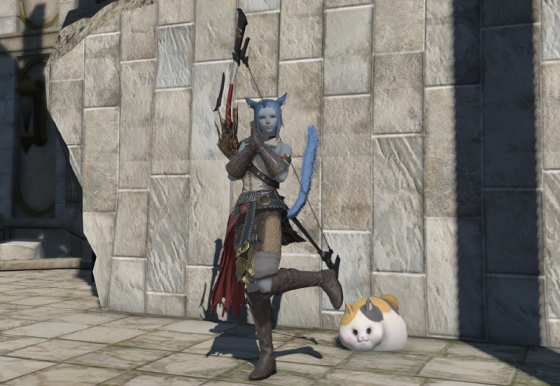 Eorzean Evening Post: Gearing Up in Patch 3.1 .
Eorzean Evening Post: Gearing Up in Patch 3.1 . Massive Thought: Using MMOs for Education .
Massive Thought: Using MMOs for Education .